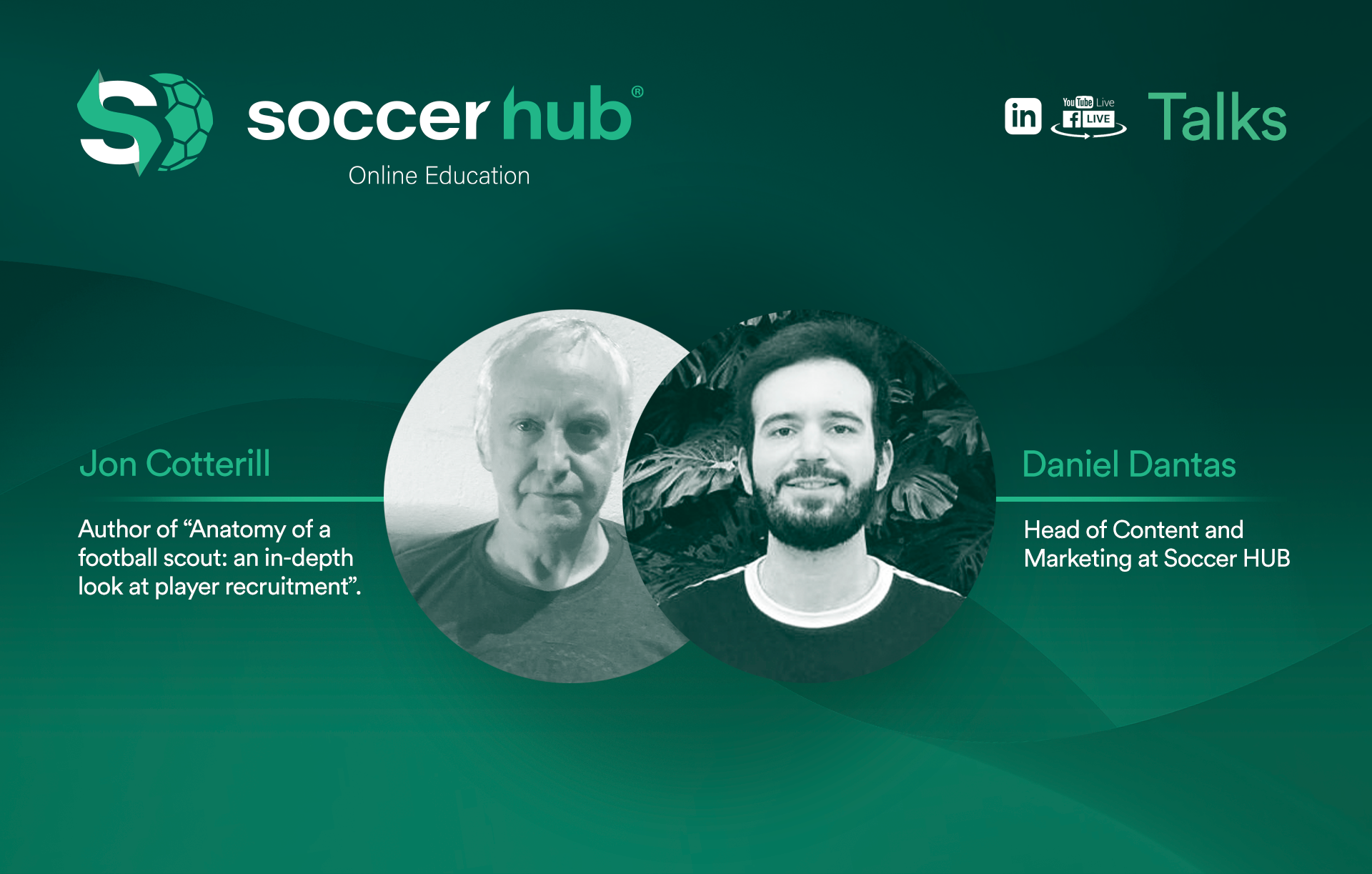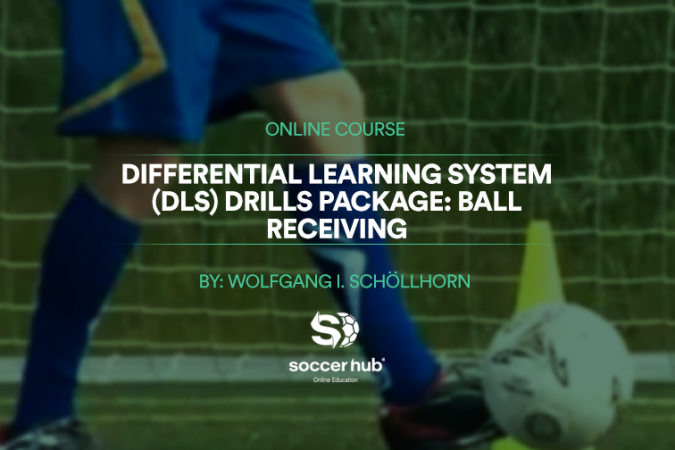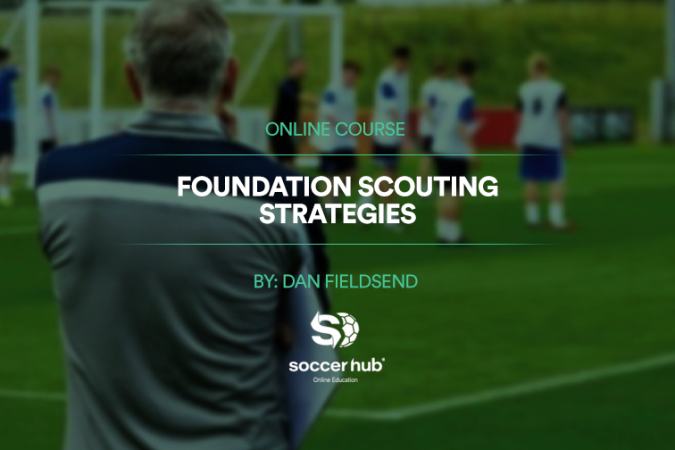

Jon Cotterill: “Data cannot tell you everything”
Jon Cotterill is a South American football expert, television commentator and the author of the book “Anatomy of a football scout: an in-depth look at player recruitment”.
Currently living in São Paulo, Brazil, he has been covering South American football since 2002 and has worked for FIFA, the Brazilian Football Confederation and the South American Football Confederation. He has also been in player talent identification for approximately ten years. Recently, Jon flagged many football players to Premier League clubs, such as Bruno Guimarães (Newcastle FC), Julián Álvarez (Manchester City), and Kevin Paredes (Wolfsburg).
In this latest edition of Soccer HUB Talks, Jon reflects on how the football scouting process should ideally be conducted in clubs, the prerequisites to being a good scout and the main challenges for today’s talent spotters after a brief overview of his newly published book.
Scouting process in clubs
Every single club is different. You have probably heard this phrase a thousand times already, and it is perfectly true. Even at a Premier League level, the way they operate will be different. If it is a smaller outfit, non-league, amateur, or maybe a side that does not have a lot of money, they probably still be eyes on the pitch, based on contacts, with someone making a phone call. Even down the pyramid data is coming in and playing a bigger part. First of all, you have to have a fast process. Scouting is time-consuming, so you need a quick and reliable process: something which can be repeated, not just for one player, but for all kinds and levels of players. The clubs have to have self-knowledge. They have to know who they are, the way they want to play, and the kind of players they want in the building. They also have to know clearly their goals and where they want to be in the future.
Let us talk about Newcastle FC. They are not thinking long-term but short-term: they bought three or four players for a lot of money, which they might not have done if they had more time to think. They are firefighting.
Generally, what you want is a long-term plan, and you got to think about what might be happening at the end of the season. Some clubs operate over two or three transfer windows. That is quite normal. In a big and organized club, there is long-term planning. Think about Cristiano Ronaldo at Manchester United: that is not long-term planning! Suddenly, the player became available, and someone thought to get him. Now you got a player, and maybe Manchester United does not know what to do with him. Maybe they do not want him because he has cost them a fortune. That would also be an example of short-term planning, but it is Cristiano Ronaldo, so he is an exception. Clubs have to know what is in the building, who needs replacement, and where they need to strengthen. Then they have to decide on the player profile, with a list of different attributes they want. You can use data to narrow down your list. Wyscout has about 400,000 players in the database, which is a lot. A data filter would get you down from a long list to a shorter list. When you get down to the shortlist, you might go to video scouting. That helps any club to save money and time. Nowadays, you can sit in your office and see anybody all over the world”.
Wyscout and InStat are available to anybody, to any club. The whole finding of the hidden gems is gone out of the window. Everyone with a bit of data analysis can find the same kind of players.
“Video scouting will reduce the list even further, and then clubs will have a small list for live scouting. At that point, clubs probably look at 5 to 10 players. Your ideal player, your number 1 choice, might not be available. After doing live scouting, if the player matches the data and the eye test, then might be a background check. Depending on the level of the club, these background checks can be in-depth. It is almost like a police check. It is not just looking for the Instagram account, it is much deeper – the player’s context, associations, old accounts, etc. That would be elite level. At a lower level, it might be [contacting] a coach who has worked with him or her and ex-players. When you identify the targets and you are happy with the data and the eye test, the contract offer might go to the first-choice player. You might have to convince the player that your club is the right place to go. The player might agree with the contract, but the buying club also has to present the club, their player development path, what the city has to offer, the schools, the facilities, all those kinds of things. After all of that, the player might say yes or no, and then you start to play number 2 or 3. That is it in a nutshell”.
Mandatory prerequisites to being a good scout
“People might at least be hardworking, but you got to be in any walk of life. That is just a standard”.
In the old days of scouting, people were often ex-players or ex-coaches. They brought a lot to the game, but those days – with blue-collar scouting – are over. Now, anyone who wants to be a scout can be a scout.
“One of the prerequisites might be knowledge of the use of data. I am not talking about programming but an awareness of how data might work in the scouting process. Data is a big part. It is not everything, but anyone coming into the industry now has to be aware of it and know how to use it. That is absolutely key right now. I think certificates and courses are very good. The more knowledge the scout has, the better, especially if he or she is trying to get into the game, but the experience is the key. If you know what your club is or the one you want to send your reports to, the kind of player they want, and what the coaches like, that is a huge plus”.
Main challenges for today’s talent spotters
“The use of data has been around for quite a while now, at least for a decade. COVID-19 accelerated the use of data and video scouting. If you look, the percentages of clubs who were using data and video scouting before COVID-19 were relatively low. During COVID-19, there were no games or no one could go to see a game, so it went up to 100%, but those changes had already started. Clubs had already started looking at their structures and understanding how they could save money in the scouting process, make it more evidence-based and quicker. Now, you do not need to send someone to every single game. It is too expensive and time consuming. Things are much easier having data and video scouting, but the challenge remains. Data cannot tell you everything. Sometimes, you have a player, data says one thing, and the eye says something different”.
You cannot use data to tell you about the player’s character, positioning, the type of passes, the quality of touch, etc. That is the subjective side of the game.
“The challenge for a scout is to pick out something that data has missed. Data now is cutting out a lot of players. In the old days – or relatively recent days – a player might be picked out for certain qualities, and data might say no. Getting that balance between the data and the eye test is important”.
Future trends in scouting
“Looking further into the future, artificial intelligence (AI), which is already coming in. You might see a fantastic player in one country, looking like he or she can make a move to a higher league, and then it does not work out. Trying to predict how a player will function in a different league or different country is where AI will come in. Certain programs can give you an idea, but there are so many factors coming into play…”
It is like a Hollywood film. Sometimes, if you look at the formula, a film has every single ingredient to be a success, and then it is a complete flop. Footballers are the same thing. They have got everything you want, and for some reason, things do not work.
Check all our scouting courses here.
Categories
Latest Courses
-
9 Lessons
-
1 Lesson
-
6 Lessons
You May Also Like
-
-
August 1, 2022
-
-
June 3, 2022
-
-
May 27, 2022





